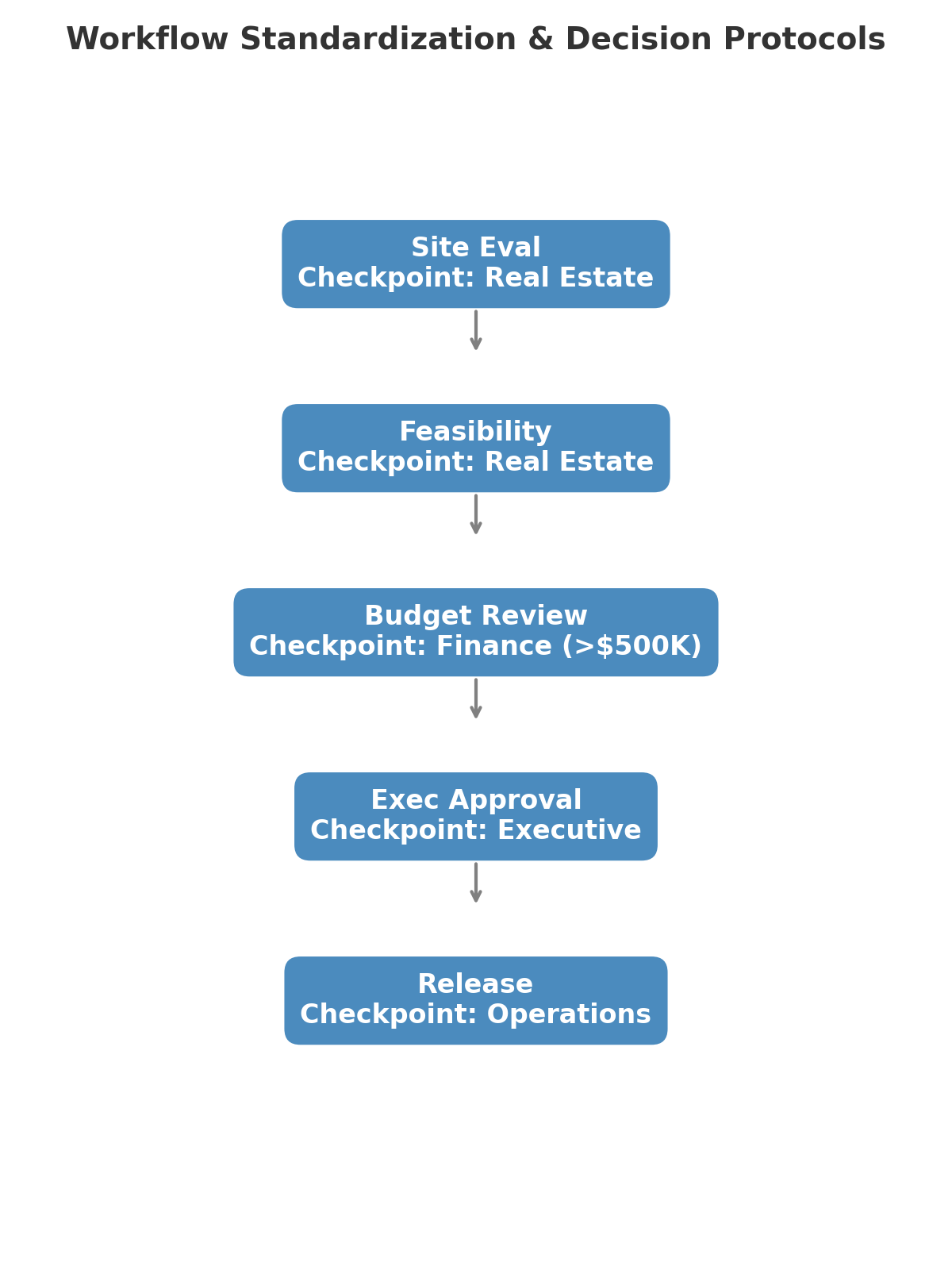As real estate portfolios grow, execution becomes more complex. Many organizations rely on a fragmented mix of brokers, contractors, and third-party vendors. This approach may work in early stages, but it often breaks down as volume increases. Without internal systems in place, the result is miscommunication, delays, cost overruns, and limited visibility.
Internal operations are the foundation for scale. From team roles and workflows to decision protocols and reporting structures, formalizing real estate operations brings clarity and control. It ensures that projects move forward consistently and in alignment with strategic goals.
StrideArc helps clients design internal real estate functions that support growth. We focus on structure, accountability, and repeatability so real estate execution becomes a core capability rather than a coordination risk.
Benefits:
● Reduced reliance on external vendors
● Clear internal roles and workflows for real estate execution
● Greater visibility and control across markets
● Scalable operations that support multi-market growth

.png)
In many organizations, real estate workflows evolve informally. Emails replace systems, approvals vary by project, and internal teams rely on workarounds instead of structured processes. This lack of consistency slows execution and creates risk as project volume grows.
Standardizing workflows ensures that every project follows a defined path. From site evaluation to construction handoff, teams know exactly who does what, when, and with what level of authority. Decision protocols add structure by aligning internal approvals with capital thresholds, project types, or risk profiles.
When workflows are mapped and decision rights are clear, execution becomes repeatable and scalable. Teams move faster, risk is reduced, and leadership has confidence that each project is advancing through a controlled internal system.
Benefits:
● Repeatable execution across markets and project types
● Clear decision protocols tied to roles, budget levels, or complexity
● Fewer delays and handoff failures between departments
● Stronger alignment between field teams and executive leadership
.png)
As portfolios grow, internal execution often becomes inconsistent. Roles blur, decision-making slows, and projects begin to stall. The root issue is usually organizational, not technical. Without a clear structure in place, even the most capable teams struggle to deliver predictable results.
Organizational design creates the foundation for scalable real estate execution. By defining roles, reporting lines, decision rights, and accountability frameworks, this service ensures that internal teams are aligned and positioned to operate at a higher level.
Key elements of organizational design include:
● Defined roles for feasibility, budgeting, approvals, and handoff
● Clear reporting structure and lines of accountability
● Decision protocols tied to project phases and capital thresholds
● Ownership clarity between internal teams, leadership, and outside partners
This framework ensures your real estate function can grow with your business—without losing speed, alignment, or control.

Real estate projects require collaboration across multiple departments — finance, legal, operations, design, and executive leadership. When those teams operate in silos, handoffs fail, timelines slip, and accountability becomes unclear. Most execution failures are not technical, they are structural.
StrideArc helps clients clarify where roles intersect and how ownership transitions throughout the project lifecycle. We work with internal teams to map functional overlap, define clear touchpoints, and build execution frameworks that drive cross-department coordination.
This approach reduces confusion, eliminates blind spots, and creates shared accountability across the organization. Projects move forward faster, with fewer gaps and stronger alignment between strategy and execution.
Benefits:
● Clear handoffs between departments at every phase of execution
● Defined ownership that reduces delays and role conflict
● Shared accountability across teams, not just task lists
● Scalable structure that supports repeatable collaboration across markets
Define roles, reporting lines, and accountability structure to support scalable execution across multiple projects or markets.
View WhitepapersEstablish repeatable internal workflows for site evaluation, budgeting, design coordination, and approvals.
View WhitepapersCreate structures that align real estate activity with finance, operations, legal, and executive decision-making.
View WhitepapersClarify who drives real estate forward at each stage—from feasibility to handoff—ensuring projects move without stalling between roles.
View WhitepapersOrganizations typically seek this support when:
● Real estate decisions are inconsistent or depend heavily on outside parties
● Internal roles lack clarity, leading to gaps or overlap between departments
● Projects stall between handoff points such as site selection, lease execution, or design kickoff
● There is no standardized process for evaluating opportunities or approving budgets
● Expansion efforts are reactive instead of being driven by a defined internal team structure
This advisory engagement supports organizations ready to formalize their approach and bring long-term structure to how real estate is executed across locations.